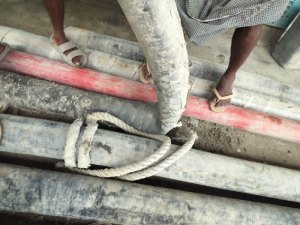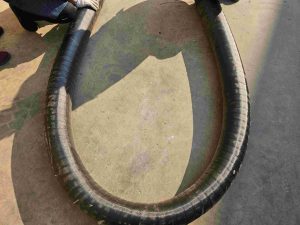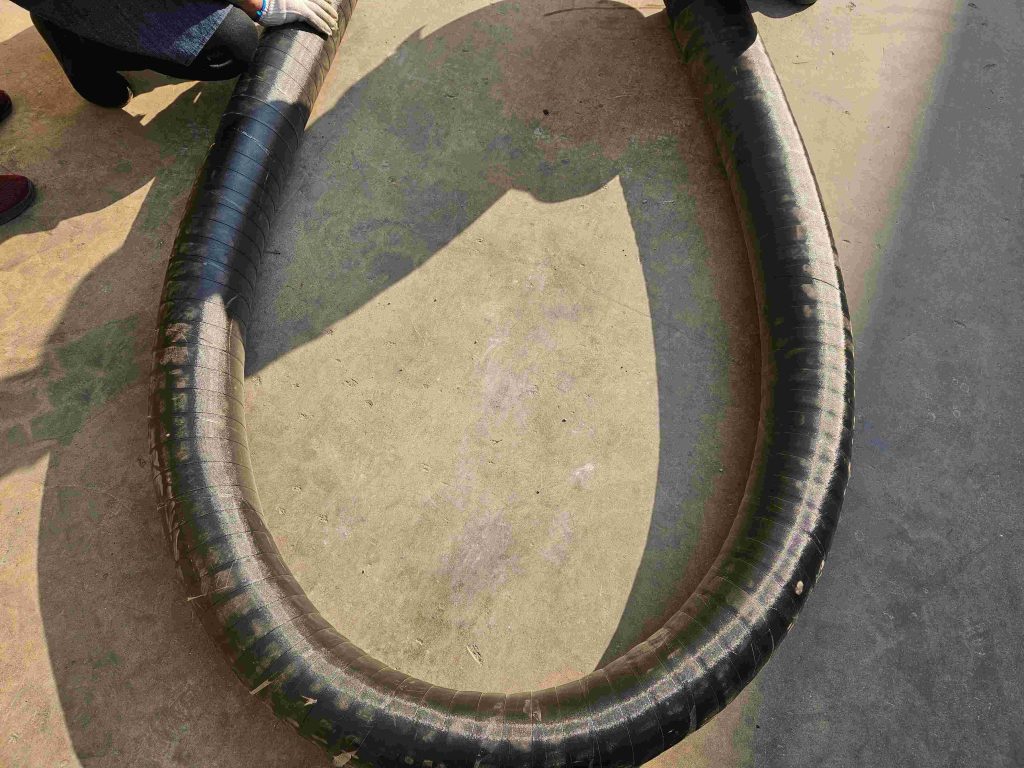Concrete rubber hoses play a crucial role in concrete pumping systems. As conduits for high-pressure materials, these hoses require excellent pressure resistance, flexibility, and durability. However, improper usage or lack of maintenance can lead to issues, especially collapsing at the hose bending points. This article analyzes the causes of this issue and offers practical operational tips to help you better use and maintain your concrete rubber hoses.
Concrete Hose Common Causes of Bending Collapse
During concrete pumping, hoses often collapse at the bending points due to improper handling. Excessive bending places too much pressure on the hose at the bend, compressing its internal structure. This can lead to collapse or deformation. Over-bending negatively affects the pumping process and may also damage the hose, which can severely disrupt the operation of the entire system.
How to Prevent Concrete Hose Bending Collapse
To prevent collapse at the hose bending points, follow these operational practices:
- Avoid Over-bending
Every hose has a minimum bending radius limit. Over-bending can damage the hose’s internal structure, causing permanent damage. In extreme cases, the hose could rupture or lose its original functionality. Always ensure that the hose stays within the safe minimum bending radius to prevent such issues. - Maintain a Reasonable Bending Radius
To prevent compression at the hose’s internal walls, which can cause collapse or rupture, ensure that the hose’s bending radius never falls below the manufacturer’s recommended minimum. Tight bends create uneven pressure within the hose, leading to damage. - Proper Hose Placement
Avoid stacking hoses together or pulling them forcefully during handling. Keep the hose straight or mildly bent to prevent excessive pressure on the hose. - Regularly Check Hose Condition
After prolonged use, inspect the hose at bending points and connections for any signs of wear, cracks, or collapse. If issues arise, repair or replace the hose immediately to prevent further damage. - Avoid Improper Operations
Operators must understand the proper handling techniques for hoses. Avoid over-pulling, rapid rotation, and unnecessary sharp turns, as these actions add stress to the hose, increasing the risk of damage.
Comparison Between Improper Operation and Factory Testing
Improper handling can cause issues like bending collapse. The following images illustrate the difference between improper operation and correct usage:

Over-bending or pulling the hose damages the structure at the bend, leading to collapse. This operation negatively impacts the hose’s performance.

Proper bending angles and handling ensure that the hose functions correctly without collapse or damage at the bend. By following the right methods, the hose will last longer.
Proper Maintenance for Longer Use
Correct operation and detailed maintenance not only prevent hose bending collapse but also significantly extend the hose’s lifespan. By following these guidelines, you can maintain the hose’s flexibility and durability, ensuring stable, long-term operation for the concrete pumping system. Regular checks and maintenance can also reduce repair costs and downtime caused by hose failure, boosting construction efficiency.
In conclusion, you can avoid hose bending collapse with proper operation, appropriate usage, and regular checks. By following correct practices and maintaining the hoses properly, you can extend their lifespan and improve both safety and efficiency in your construction projects. We hope this article provides valuable insights to help you maintain your concrete pumping system effectively.




